The Ridgid R9000K 12V Drill and Impact Driver Kit pairs together a couple of compact tools that on paper, spec out very well. In fact, in terms of speed and torque, these are more powerful than 12V kits that cost $50+ more than the $129.99 you’ll pay for this one.
I was kind of surprised when I looked at user feedback given about this kit compared to the glowing reviews that other manufacturers received on theirs. Some of the complaints included loose battery fitting, the chuck not holding onto the bit, low power, and ergonomics. This certainly isn’t representative of all of the feedback out there as there are definitely some very happy owners as well.
Still, I’m going to put the Ridgid R9000K kit through its paces while also looking at these specific issues. By the end, I hope to be able to say definitively whether or not this kit is worth the excellent value that it appears to be.
Ridgid R9000K Specifications
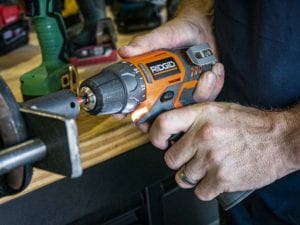
Drill
- Power Source: Ridgid 12V HyperLithium Battery
- No Load Speed: 0 – 350/0 – 1500 RPM
- Torque: 400 inch pounds
- Chuck: 3/8 inch keyless
- Clutch positions: 18
Impact Driver
- Power Source: Ridgid 12V HyperLithium Battery
- No Load Speed: 0 – 2000 RPM
- Torque: 1100 inch pounds
- Impacts: 0 – 3000 IPM

- Chuck: 1/4″ Hex
Included with the Ridgid R9000K Kit
- 2.0 amp hour Ridgid HyperLithium Battery
- 4.0 amp hour Ridgid HyperLithium Battery
- 2 belt hooks
- 12V charger
- #2 Hex shank Phillip’s bit
- Kit bag
- Manuals
Ridgid R9000K Out of the Box
Unpacking
When you unpack the Ridgid R9000K 12V Drill and Impact Driver Kit, you’ll find the drill, impact driver, 2.0 amp hour battery, 4.0 amp hour battery, charger, 1/4″ hex shank bit, a pair of belt hooks, and the manual.
I’m actually pretty happy that two belt clips were included. We’ve had other kits from time to time come through with just one, leaving us to wonder which tool is going to be left out and likely, less used since we can’t hang it on our belt safely.
It’s also really nice that you’ll get both a 2.0 and 4.0 amp hour battery. My reality is that I’ll be using one tool or the other on longer jobs, so to have the 2.0 to back up the 4.0 while it’s charging is reassuring that I won’t have to interrupt my work.
Feature Sets
The impact driver is pretty basic when it comes to features. You’ve got a forward/lock/reverse switch that’s easily accessible to your thumb or forefinger depending on which direction you want to push it. It has a standard 1/4″ quick connect chuck and variable speed trigger. The LED light on the front automatically comes on when the trigger is pulled and times out once you release it. The belt clip can be installed on either side if you have a preference. I’m a fan of Ridgid’s Hex Grip overmold that allows a solid grip with one hand.
The 2-speed drill in the Ridgid R9000K kit features the same belt clip, grip, LED, trigger, and direction/lock switch that is on the impact driver. Not to be confused with simply high speed or low speed, it’s the traditional tradeoff of high speed/low torque and low speed/high torque. That torque is controlled by the clutch adjustment collar that allows you to select 18 different clutch positions to dial in what you need.
Using the Ridgid R9000K 12V Drill/Impact Driver Kit
Okay, so you picked up this kit (or are thinking about picking up this kit) for $129.99. My goal this time around is to look at some of the complaints I’ve read about. I will share some thoughts from my experience, though.
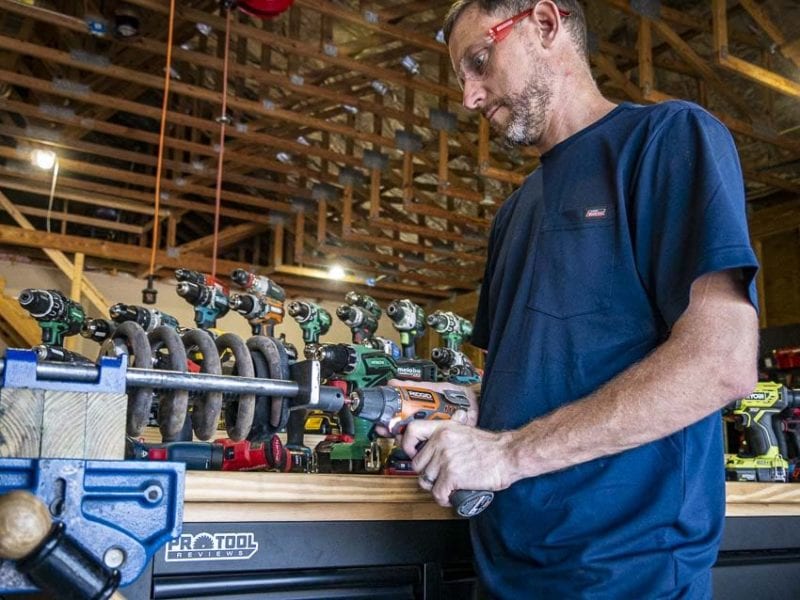
First, the drill specs to 1500 RPM and it averages 1435 RPM on our tachometer. Using a 1/2″ twist bit, it holds onto an average of 1088 RPM—one of just 3 models to stay above the 1000 RPM mark. It holds its own with a 3/4″ auger bit as well, only dropping to 902 RPM.
While the 400 in-lbs torque specs are high, it settles in the middle of the group at 104 in-lbs.
The impact driver sits in the shadow of Milwaukee’s M12 Fuel that dominated our performance testing in this class. Ridgid’s 239 RPM average is decent compared to most but pales in comparison to Milwaukee’s 397 RPM.
It’s a similar story in torque. Ridgid’s 301 in-lbs of fastening torque and 600 in-lbs of breakaway torque are pretty far behind the leaders’ 804 in-lbs and 1680 in-lbs, respectively.
Ergonomics
One of the great things about 12V kits is lighter weight and more controlled one-handed fastening. 18V/20V tools often have enough torque to rip your arm off if you’re not prepared for it. There are plenty of shoulder, elbow, wrist injuries to prove it. One thing I was impressed with by both tools in the R9000K kit is that I was able to handle my tasks easily with one hand. There was power to spare, but not so much that one-handed fastening duties were in danger of being out of control.
When it comes to the lighter weight and compact size… well, there’s some room for debate there. The impact driver without the battery is almost as heavy as the 18V X4 Impact Driver I use for heavy-duty work. It’s also longer (although the housing is shorter) than its 18V brother.
The drill is significantly lighter and shorter than the hammer drill in that same 18V X4 kit though. Once you slap the battery packs in place, their lighter weight is immediately obvious, though.
The other small issue I have is one that plagues all pod-style 12V battery tools. It’s not a deal breaker by any means, but the 18V X4 tools have a smaller diameter handle that is a bit more pleasing to grip than this 12V kit.
Complaints about the Ridgid R9000K Kit
These are representative of the complaints that I found looking around online regarding the Ridgid R9000K Kit. I set out to see which of these I could replicate and confirm them or put them to rest.
The drill bit consistently falls out during work
This was by far the most common complaint that I found, even among some of the more satisfied users. I was conscious of this when I first started working with the drill, but as I did not experience any issue with it, I went on about my business. After switching out the bit a few times, it actually did come out on me.
When I investigated a little deeper, two things became apparent when I compared it to my Ridgid 18V X4 Hammer Drill. First, the teeth of the chuck that hold the bit in place are triangular in the Ridgid R9000K Drill. This leaves the bit being held by three points of those teeth instead of sides. On the 18V, you have a much larger, flatter surface holding the bit which is more secure.
The second thing that I noticed is that when you tighten down the chuck on the 12V drill, it comes to an abrupt stop. When you feel the chuck tighten around the bit on the 18V hammer drill, it allows you to ratchet down a little more. This leads me to at least feel like I was able to put more clamping force on the 18V and could certainly contribute to this issue.
Result: You may experience this.
The battery does not sit securely in the handle and occasionally gets caught on your shirt, pant or other item loosening it enough to fall out when in motion
I tried to catch the 4.0 amp hour battery on anything and everything that I could in both the impact driver and drill. I couldn’t get it to budge for anything without releasing it intentionally. There is a small amount of movement when the battery is locked in place (less than 1/16″) that is as much or less than my other cordless tools. The 2.0 amp hour battery would not be a concern since its design is flush with the handle.
Result: This is not an issue.
The impact has no power
I’m not entirely sure what this user meant by the impact having “no power’. 1100 inch-pounds of torque easily driver most screws and even small lags.
Result: What were you trying to drive?
My next biggest criticism was the handle grip. The design needs work, with better ergonomics
The handle grip actually is a larger diameter on the 12V kit compared to the 18V. Part of this is because of the battery size and the fact that most of those components fit inside the handle. Still, the handle really is a bit more comfortable on the 18V kit. With the compact battery, the balance is off some. The additional weight of the 4.0 amp hour battery helps that out quite a bit though.
Result: Mixed. There’s some truth here, but this is going to be a challenge for any manufacturer due to the nature of using compact stem batteries in 12V tools.
Price
You can pick up the Ridgid R9000K 12V Drill and Impact Driver Kit for $129.99. That’s still a decent value when you look at where other brands are:
- Ridgid 12V R9000K: $129.99
- Skil 12V Brushless: $149
- Milwaukee M12 Fuel 3497-22: $199
- Makita 12V CXT CT232: $148
The Bottom Line
There are a few tradeoffs to consider with the Ridgid R9000K 12V kit. There’s enough power to drill and drive the way we’re used to with 12V tools, but newer tools are pushing the boundary further, particularly for impact drivers.
It’s still one of the best values you can get in a 2-tool combo kit. If you’re looking for a compact kit to handle light-duty and household tasks, it’s a win. If you’re looking for a kit that rivals the performance of compact 18V tools, this isn’t it.
Editor’s Note: Check out our best cordless drill article for our top picks.

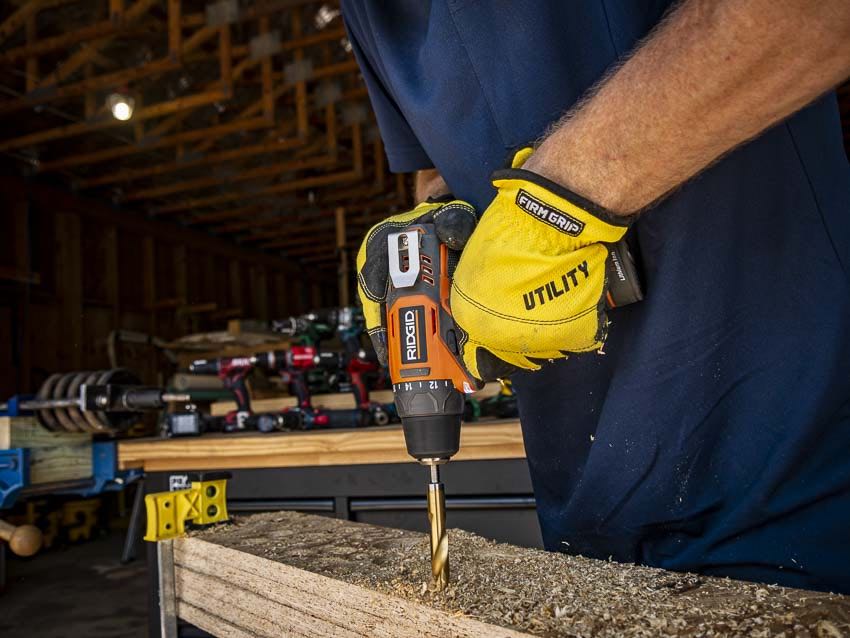
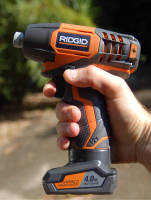
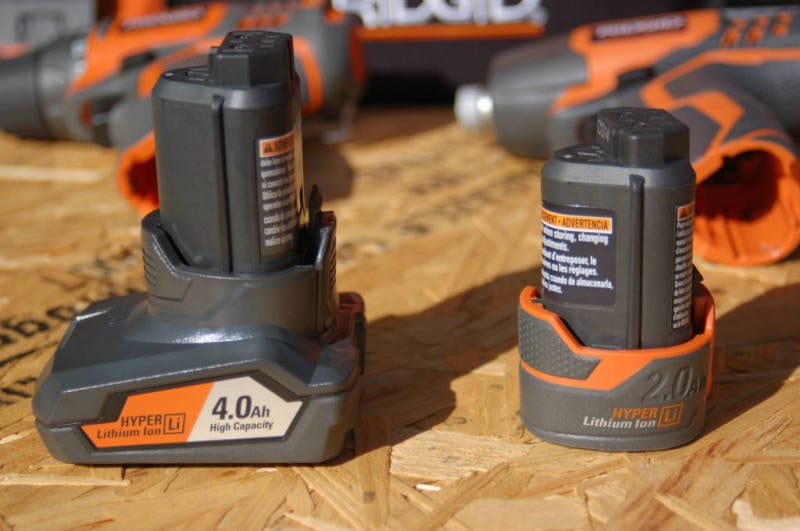

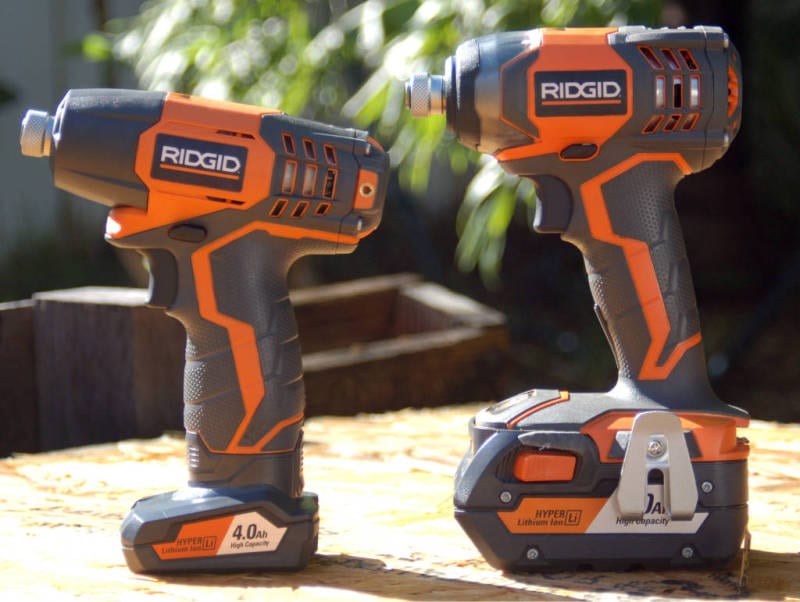
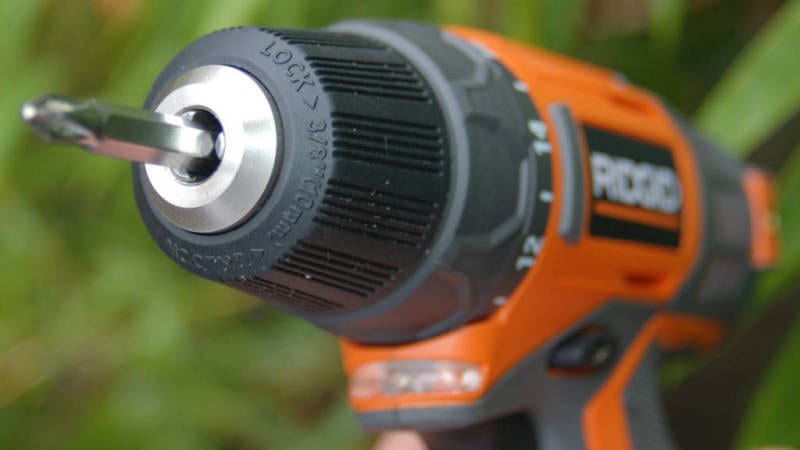
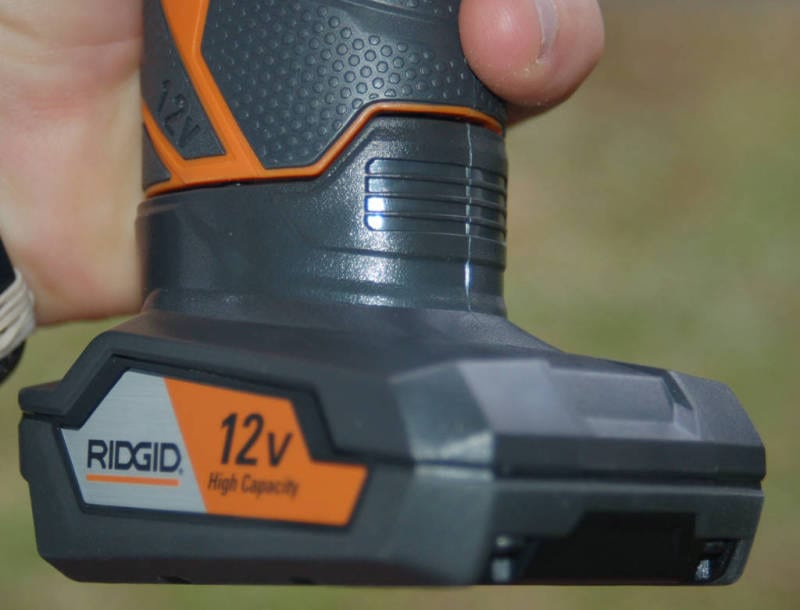
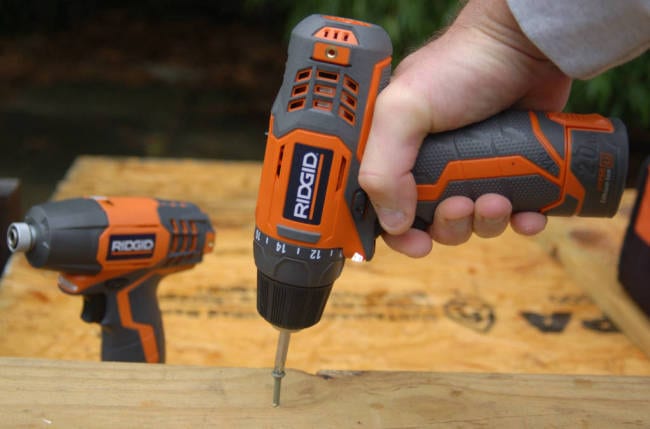
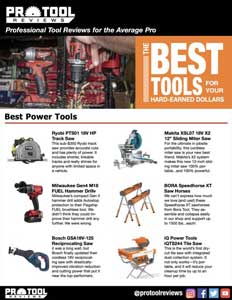


I’m glad to see this review is honest and points out the shortcomings of the Rigid drill chuck. I have on several occasions had problems with, not only the 12V drill, but the 18V too. I absolutely love the power and durability of the 18V Octane drill, but sadly the bit will fall out with 2 or 3 pulls of the trigger. As an HVAC contractor, we do a lot of drilling, and using the Rigid 12V to drive screws or the 18V to dtrill is an exercise in futility, and they got returned. It’s a shame because the 18V… Read more »